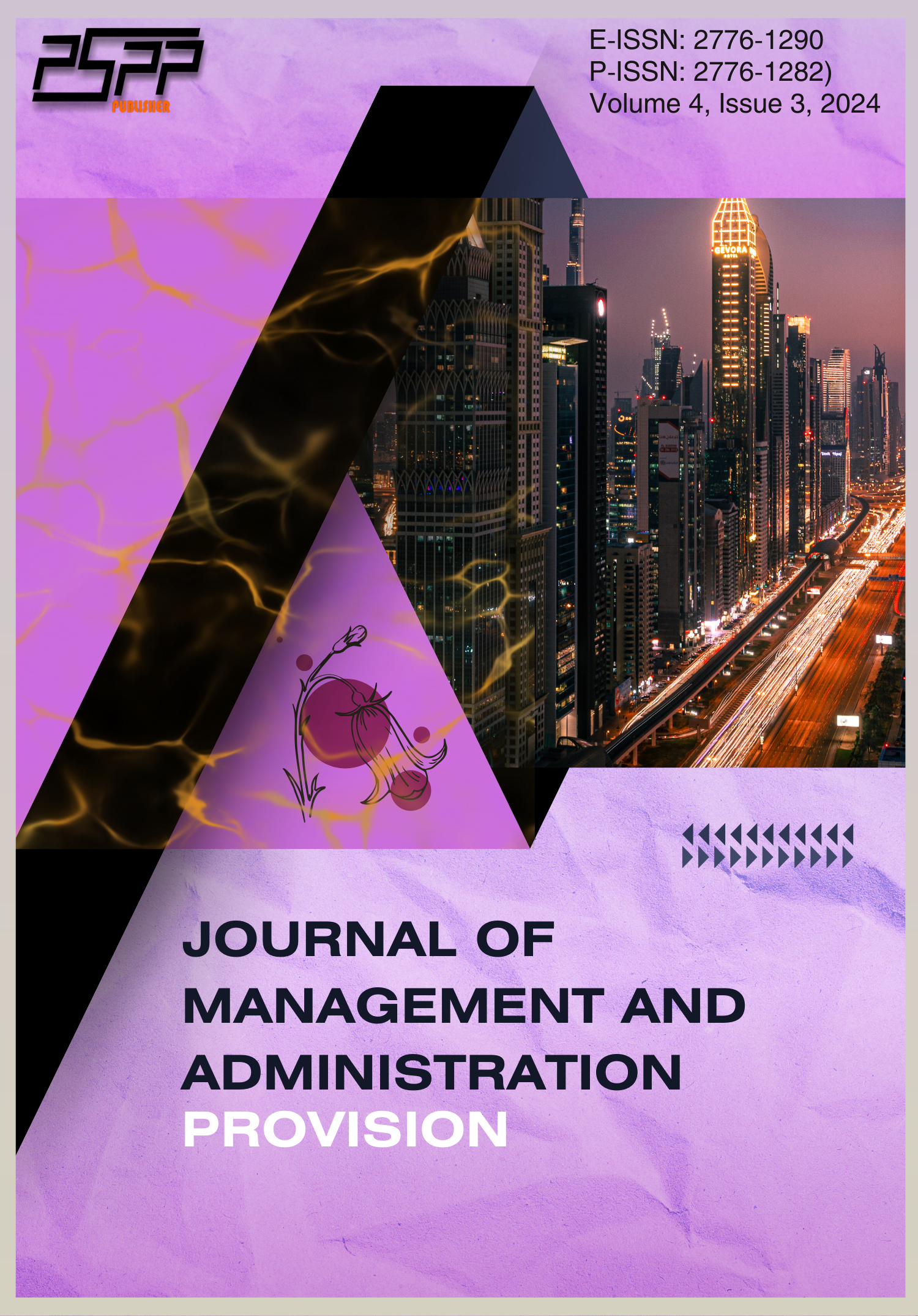Effectiveness Analysis of Arrival-Departure Service in Sultan Hasanuddin International Airport Mandai South Sulawesi
DOI:
https://doi.org/10.55885/jmap.v4i3.450Keywords:
Aircraft Services, Apron, AirportAbstract
The Purpose of this study: (1) To analyze the effectiveness of air services suddenly departed at Sultan Hasanuddin International Airport Mandai South Sulawesi. (2) To determine the aircraft parking apron arriving and ready to be dispatched is still adequate. Methods of data analysis used in this study adapted to the characteristics of the runway at the Sultan Hasanuddin International Airport Mandai South Sulawesi, namely (1) Using the queuing model Single Channel Single Phase (SC-SP), (2) λ = arrival rate of the average air per hour, (3) μ = aircraft capable of being served on average per hour, (4) Lq = number of units in the queue, (5) Ls = number of units in the system, (6) Wq = wait time average, ( 7) Ws = the average waiting time in the system, (8) P = the intensity level of service facilities. From the analysis of the data, Sultan Hasanuddin International Airport using queuing model Single Channel Single Phase (SC-SP) and the queue discipline First Come First Served (FC-FS). Average number of planes coming in was the best 5 per hour and the average number of aircraft served are the best 6 per hour. The average number in the system is the best 5 per hour and the average number of aircraft in the queue are 4 aircraft per hour. Based on the queuing model analysis for the aircraft, it indicates that the effectiveness of air services at Hasanuddin International Airport has been satisfactory, and the apron capacity is adequate.
References
Allon, G., Federgruen, A., & Pierson, M. (2011). How much is a reduction of your customers' wait worth? An empirical study of the fast-food drive-thru industry based on structural estimation methods. Manufacturing & Service Operations Management, 13(4), 489-507. https://doi.org/10.1287/msom.1110.0343
Dandl, F., Engelhardt, R., Hyland, M., Tilg, G., Bogenberger, K., & Mahmassani, H. S. (2021). Regulating mobility-on-demand services: Tri-level model and bayesian optimization solution approach. Transportation Research Part C: Emerging Technologies, 125, 103075. https://doi.org/10.1016/j.trc.2021.103075
Gmach, D., Krompass, S., Scholz, A., Wimmer, M., & Kemper, A. (2008). Adaptive quality of service management for enterprise services. ACM Transactions on the Web (TWEB), 2(1), 1-46. https://doi.org/10.1145/1326561.132656
Gustiawati, D. (2022). Analisis antrian pelayanan nasabah pada PT. Bank Muamalat Indonesia KC Panyabungan (Doctoral dissertation, IAIN Padangsidimpuan).
Hendrianto, T. (2004). Analisis Antrian Nasabah Untuk Menentukan Tingkat Pelayanan Yang Optimal (Studi Kasns pada PT. BNI (Persero) Cabang 1TB Bandnng) (Doctoral dissertation, Fakultas Ekonomi Dan Bisnis Universitas Pakuan).
Kosasih, S., & Dr, M. E. (2009). Manajemen Operasi. Jakarta: Mitra Wacana Media.
Lin, Y. T., Xia, K. N., & Bei, L. T. (2015). Customer's perceived value of waiting time for service events. Journal of Consumer Behaviour, 14(1), 28-40. https://doi.org/10.1002/cb.1498
Mahyuddin, M., Rangan, P. R., Nur, K. N., & Halim, H. (2021). Perancangan bandar udara. Penerbit Yayasan Kita Menulis
Prasetio, E. (2021). Analisis Kualitas Pelayanan Perizinan Melalui Online Single Submission (OSS) pada Dinas Penanaman Modal dan Pelayanan Perizinan Terpadu Satu Pintu Kota Binjai (Studi Kasus Pelayanan Izin Usaha Jasa Konstruksi (IUJK)).
Rachman, T. (2016). Simulasi model antrian optimal loket pembayaran parkir. J. Inovisi, 12(2), 72-85.
Rust, R. T., Zahorik, A. J., & Keiningham, T. L. (1995). Return on quality (ROQ): Making service quality financially accountable. Journal of marketing, 59(2), 58-70. https://doi.org/10.1177/002224299505900205
Sari, D. R. (2022). Analisis Sistem Antrian Multi Channel Single Phase Dalam Penerapan Protokol Kesehatan Pada Masa Pandemi Covid-19 Di Merdeka Walk Medan (Doctoral dissertation, Universitas Islam Negeri Sumatera Utara Medan).
Sherman, H. D., & Zhu, J. (2006). Service productivity management: Improving service performance using data envelopment analysis (DEA). Springer science & business media.
Siagian, P. (1987). Penelitian Operasional, Jakarta: Penerbit Universitas Indonesia (UI-Press).
Song, H., Armony, M., & Roels, G. (2024). Queue configurations and operational performance: An interplay between customer ownership and queue length awareness. Manufacturing & Service Operations Management, 26(6), 2284-2304. https://doi.org/10.1287/msom.2023.0202
Ülkü, S., Hydock, C., & Cui, S. (2022). Social queues (cues): Impact of others’ waiting in line on one’s service time. Management Science, 68(11), 7958-7976. https://doi.org/10.1287/mnsc.2021.4282
Veeraraghavan, S., & Debo, L. (2009). Joining longer queues: Information externalities in queue choice. Manufacturing & Service Operations Management, 11(4), 543-562. https://doi.org/10.1287/msom.1080.0239
Downloads
Published
How to Cite
Issue
Section
License
Copyright (c) 2024 Journal of Management and Administration Provision

This work is licensed under a Creative Commons Attribution-ShareAlike 4.0 International License.
Licensing Statement
Journal of Management and Administration Provision operates under articles of this journal licensed under a https://creativecommons.org/licenses/by/4.0. This allows for the reproduction of articles, free of submissions charge, with the appropriate citation information. All authors publishing with the Journal of Management and Administration Provision accept these as the terms of publication.

















